The cross-sectional area of the U-tube shown in the figure is everywhere uniform and of value 1.25×10−3m2. The horizontal section of the tube is of length 20 cm. When at rest, the limbs of the tube contain a liquid of density 2.5 up to equal heights. If the tube is rotated with angular velocity of 8.4rad/s about one limb, calculate the volume of liquid that flows from one limb to the other.
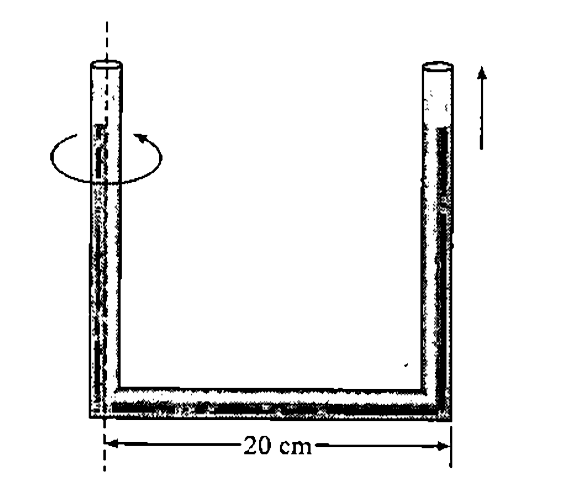
The correct Answer is:[88.2cm3]
Topper's Solved these Questions
Similar Questions
If cross- sectional area of limb I is A1 and that of limb II is A2 then velocity of the liquid in the tube will be, (cross- sectional area of tube is very small)
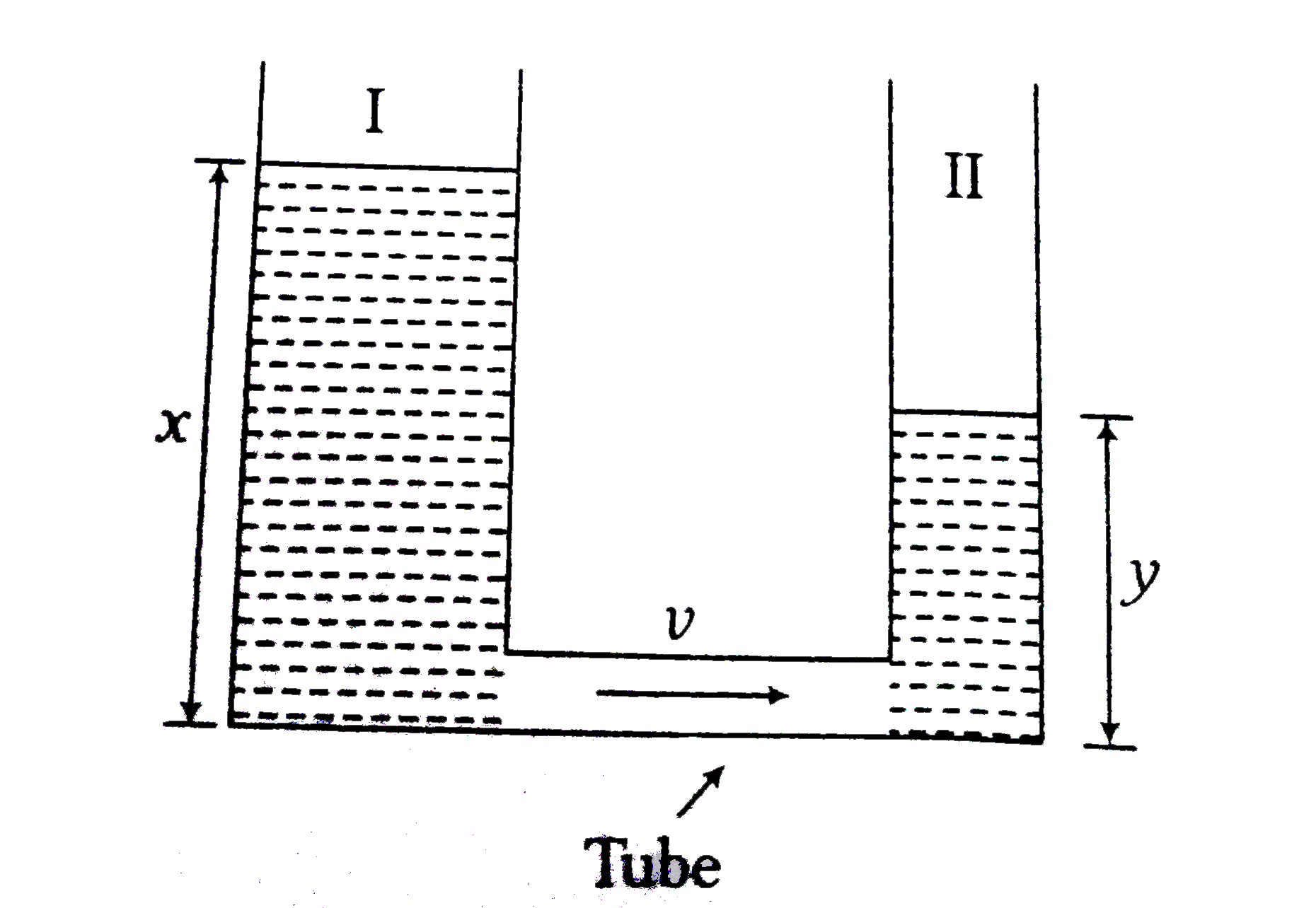
View Solution
A vertical communicating tube contains a liquid of density ρ. If it moves with a horizontal acceleration a, pressure at A is equal to :
View Solution
Knowledge Check
What will happen if there is a vacuum just above one limb of the U-tube half filled with liquid as shown in figure?
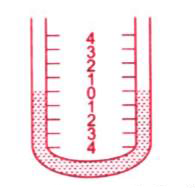 AThe liquid will rise up in the limb where there is vacuum and move down in the other limb.BThe liquid will go down in the limb where there is vacuum and rise up in the other limb.CThe liquid will go down in both the limbs of U-tube.DThe liquid will rise up in both the limbs of U-tube.
AThe liquid will rise up in the limb where there is vacuum and move down in the other limb.BThe liquid will go down in the limb where there is vacuum and rise up in the other limb.CThe liquid will go down in both the limbs of U-tube.DThe liquid will rise up in both the limbs of U-tube.If cross- sectional area of limb I is A1 and that of limb II is A2 then velocity of the liquid in the tube will be, (cross- sectional area of tube is very small)
 A√2g(x−y)BA1A2√2g(x−y)CA2A1√2g(x−y)DNone of these
A√2g(x−y)BA1A2√2g(x−y)CA2A1√2g(x−y)DNone of theseA vertical U-tube contains a liquid of densityρ and surface tension T. if the radius of the meniscus of liquid in the limbs of the U-tube are R1 and R2 find the difference in the liquid column in the limbs.
AΔh=T(R1−R2)ρgR1R2BΔh=2T(R1−R2)ρgR1R2CΔh=2T(R1+R2)ρgR1R2DΔh=4T(R1−R2)ρgR1R2
A U-tube contains a liquid to a height of 9.8 cm in one of the limbs. The tube is vertical. If the liquid on one side is depressed a little and released its motion in the tube is simple harmonic motion. Find its period.
View SolutionA horizontal tube has different cross-sectional areas at point A and B .The diameter of A is 4 cm and that of Bis 2 cm. Two manometer limbs are attached at A and B. When a liquid of density 8.0 g cm−3 flows through the tube, the pressure difference between the limbs of the manometer is 8 cm. Calculate the rate of flow of the liquid in the tube .
View SolutionA horizontal tube of uniform cross-sectional area A is bent in the form of U as shown in figure. If the liquid of density ρ enters and leaves the tube with velcity v, then the extermal force F requried to hold the bend stationary is
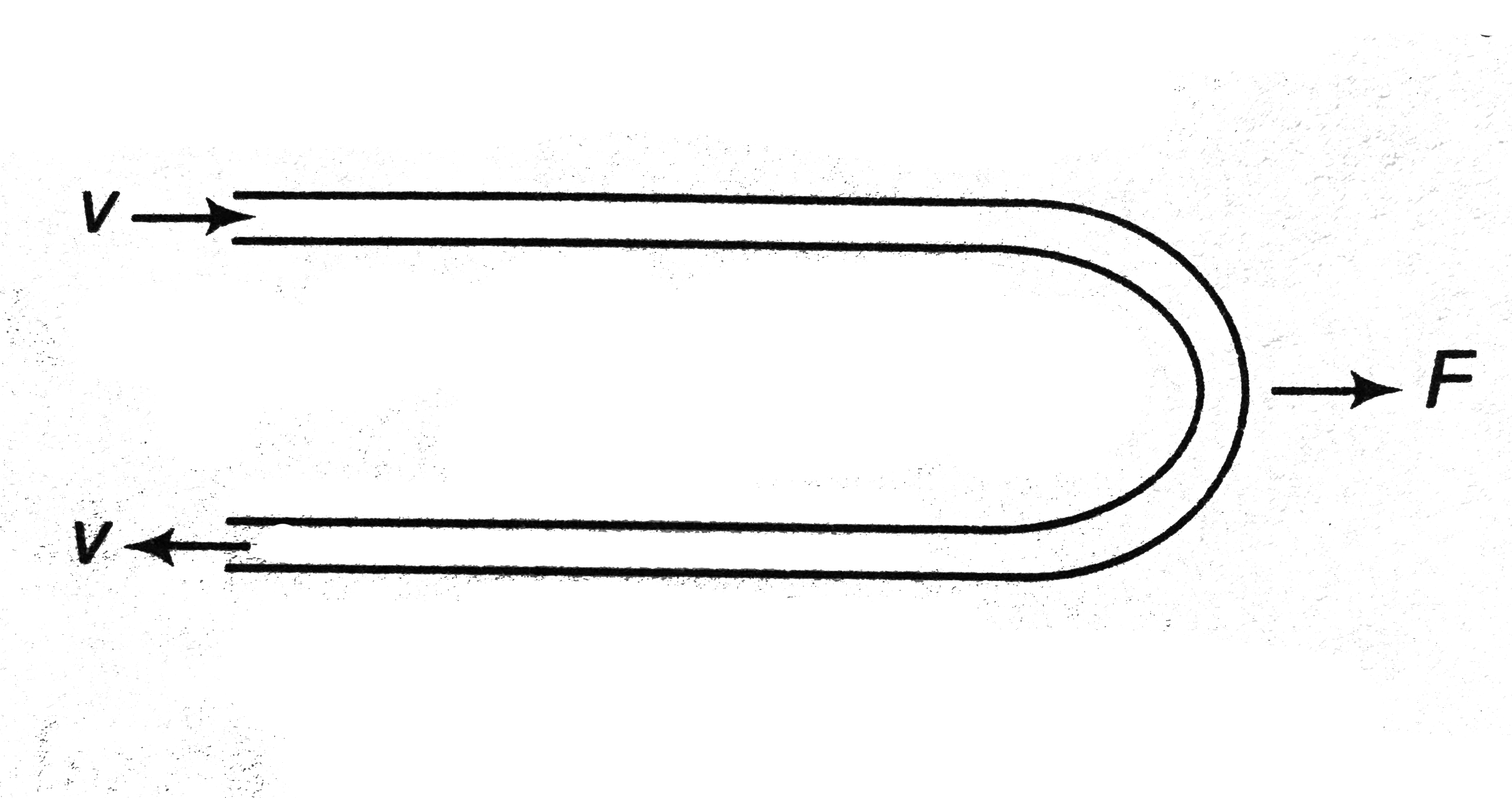
View SolutionWater flows through the tube shown in figure. The areas of cross section of the wide and the narrow portions of the tube are 5cm2and2cm2 respectively. The rate of flow of water through the tube is 500cm3s−1 . Find the difference of mercury levels in the U-tube.
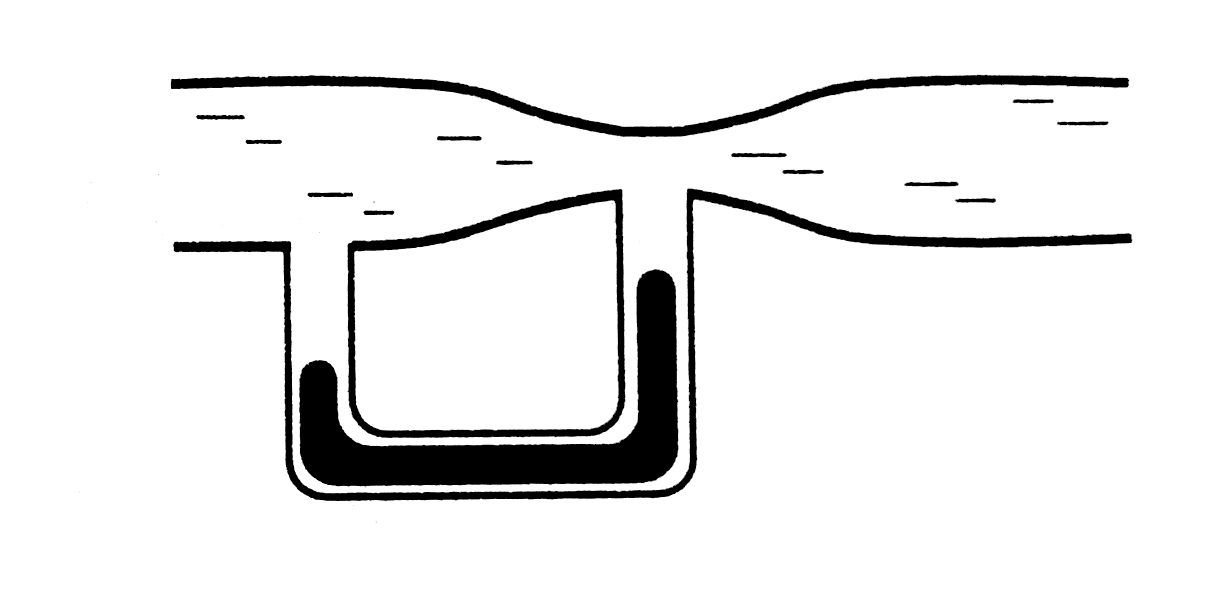
View SolutionA horizontal tube of uniform cross-sectional area A is bent in the form of U as shown in figure. If the liquid of density ρ enters and leaves the tube with velcity v, then the extermal force F requried to hold the bend stationary is

View Solution
